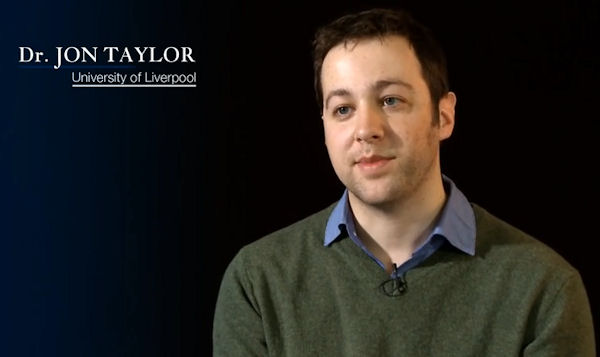PRaVDA at the Royal Society Summer Science Exhibition

The Royal Society Summer Science Exhibition is an annual display of exciting cutting-edge science and technology in the UK. The exhibition is held in London each year and is open to the public for a week free of charge. This year the exhibition takes place from 1-6th July and scientists from the University of Liverpool’s Particle Physics group have been selected to help present a project called PRaVDA: Seeing and treating cancer with protons.
The PRaVDA (Proton Radiotherapy Verification and Dosimetry Applications) Consortium is composed of physicists from the University of Liverpool along with engineers, medical physicists and oncologists from the Universities of Birmingham, Lincoln and Surrey as well as University Hospitals in Birmingham and Coventry, and the iThemba Laboratories in Cape Town, South Africa.
The aim of the PRaVDA project is to design and make an instrument that is capable of improving particle therapy, a type of treatment for cancer carried out using charged particles such as protons or carbon ions. Such a treatment has been shown to have advantages over standard x-ray radiotherapy because of the characteristic way in which charged particles lose their energy compared with x-rays. As a result of this, many new centres offering particle therapy are currently under construction including two in the UK.
The PRaVDA instrument will make use of detector technology being developed for upgrading the experiments on the LHC at the CERN laboratory in Geneva. This technology will be used to make silicon tracking detectors that are very radiation hard (resistant to radiation), very fast, (because of the large number of particles used) and very precise, delivering measurements of the path of protons as they pass through the patient. Sensors based on the designs by Liverpool particle physicists for the ATLAS experiment at the High-Luminosity LHC (HL-LHC) have been fabricated with Micron Semiconductors (UK) Ltd for the PRaVDA proton tracker and are under test at Liverpool.
The PRaVDA instrument will also consist of a second set of detectors for measuring the energy loss of the protons after they pass through the patient will make use of technology that benefits from huge advances in the microelectronics industry over the last ten years, in particular, the silicon CMOS detector technology used in mobile phone and digital cameras to capture images. These detectors will capture the residual energy of the protons after they have passed through a patient by slowing them down and measuring their range, which can then be converted back to energy.
Combining these two sets of detectors allows information about the angular deflection and energy loss of each proton as it passes through the patient to be measured. This information can be used together with sophisticated medical imaging algorithms to generate a high resolution 3D image of the inside of a patient in a process known as proton computed tomography (pCT).
This PRaVDA instrument will be similar to CT scanners available in modern hospitals that use x-rays to create an image, however, by creating a CT scanner that uses protons instead, we reduce the uncertainty in treatment planning for particle therapy which means the healthy tissue and critical structures surrounding a tumour receives a lower dose and the tumour is targeted more efficiently. While particle therapy is carried out, the PRaVDA instrument will also be capable of proton counting and position measurement at very high particle rates and at the full range of energies used during treatment allowing monitoring of the beam profile and total dose administered to the patient.
For information about all exhibits and details of the Royal Society Summer Science Exhibition please follow this link:
http://sse.royalsociety.org/2014/#AllExhibits